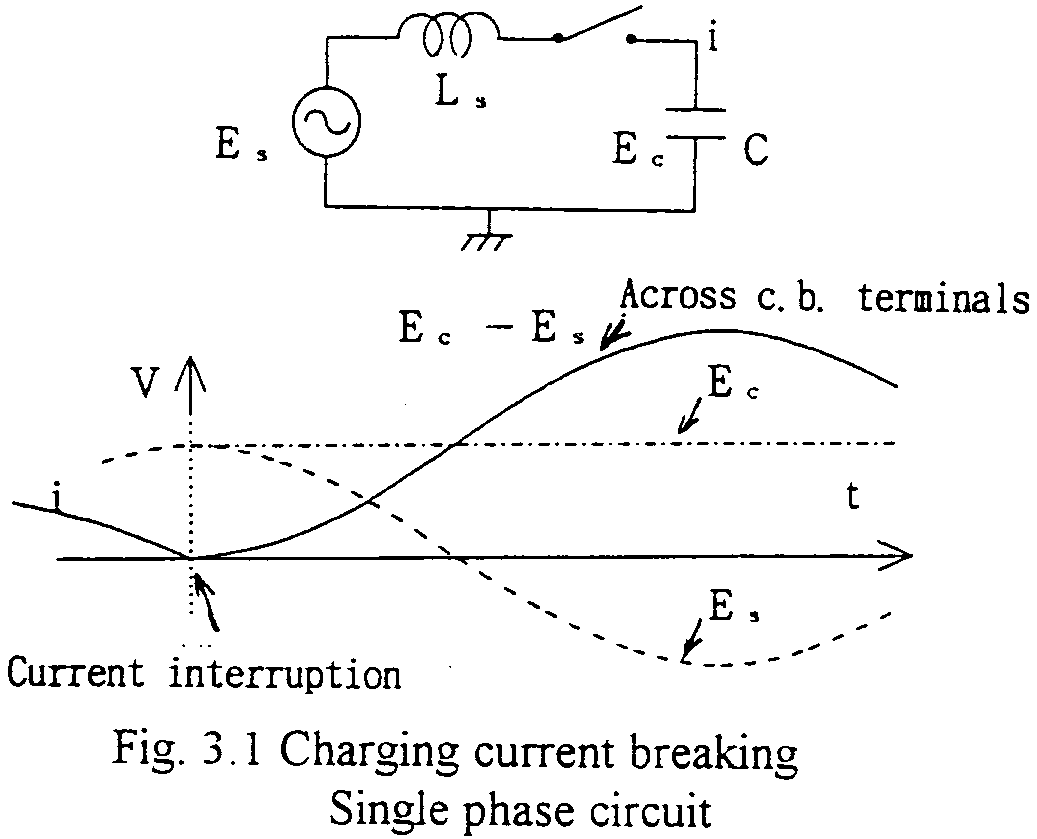AC currents which flow in capacitances are called "charging currents." The phase angle of the currents are advanced by 90deg from the voltages, and after switched off, the voltages (electric charge) in the capacitances remain with (very) slow decrements. Therefore, the voltage at one side of a circuit-breaker is quasi DC and the other side is AC according to the source voltage alternation. The maximum (peak) value of the voltage across the switching facility (circuit-breaker) is ca. twice of the source voltage (for single phase circuit). See Fig. 3.1. Due to the high stress after the current interruption, the circuit-breaker could not withstand the voltage and may "Restrike", creating high overvoltages in the circuit. Occasionally "Restrike" and "Reinterruption of the restrike-created high-frequency current" may repeat ---- "Repetitive restrike", creating furthermore high overvoltages. See Fig. 3.2.

 >
>